TARIFF RISK INDEX
Assess category disruption amid tariff uncertainty.
Numerator’s Tariff Risk Index enables brands and retailers to assess category-level vulnerability to tariff-driven disruption by combining trade exposure with consumer sensitivity. As tariffs reemerge as a key policy lever, understanding which categories are most at risk is more important than ever. Built from government trade data and layered with Numerator’s panel and survey insights, the index helps stakeholders prioritize where disruption is most likely to happen. Explore methodology and example scenarios below, or reach out for a custom category deep dive.
Updated as of May 12, 2025
ABOUT THE INDEX
Understanding the index.
The Tariff Risk Index is a directional score that ranks consumer categories based on their vulnerability to tariff-driven disruption. It combines public government trade data with Numerator’s proprietary panel and survey insights to assess import exposure, pricing sensitivity, and consumer financial resilience. The index is built on the five key variables below that collectively indicate where tariffs are most likely to impact demand.
Import Reliance
Assesses how dutiable a category is on imported goods—categories with higher import reliance face greater disruption if trade barriers tighten.
Tariff Exposure
Quantifies the potential cost impact of proposed tariffs by evaluating where imports originate and how rates vary by country based on current policies.
Purchase Power
Identifies categories most reliant on lower-income households, where even small price increases may have an outsized effect on demand.

U.S. Sentiment
Surfaces where strong consumer preference for domestically made products could help stabilize demand in the face of rising tariffs.
Price Sensitivity
Measures how responsive consumer demand has been to price changes over time—an essential indicator of a category’s resilience under cost pressure.
THE TARIFF RISK INDEX IN ACTION
Know your overall category risk.
Following a revised trade deal announced by the Trump administration on May 12, 2025, tariffs on Chinese imports have been reduced from 145% to 30%. The 10% baseline tariff rate continues to exist. While some core consumer categories—such as rubber and plastic-based items like disposable tableware and home goods—remain among the most exposed, overall category-level risk has decreased. As a result, the top 20 has shifted: select women’s apparel and food items have entered, while categories like mugs & cups and food storage containers have dropped out.
Fresh produce, home care, and over-the-counter medications continue to be more insulated, supported by strong domestic production, tariff exemptions, and relatively low price sensitivity. However, even these lower-risk categories are seeing slight increases in relative risk as the market adjusts and comparisons across categories shift.
Takeaway: As tariff dynamics evolve, it’s critical for brands and retailers to identify which categories are most exposed. High-risk categories may require proactive pricing, sourcing, or promotional strategies to offset consumer sensitivity and margin pressure. Insulated categories may present opportunities to reinforce value and stability in messaging.
Enable scenario planning.
Tariff policy shifts continue to reshape the risk landscape. Under the April 9 proposal, which originally imposed a 145% tariff on Chinese imports, categories like Christmas ornaments, sponges and scouring pads, disposable bakeware, and manual toothbrushes were among the highest risk.
Now, with Chinese tariffs reduced to 30%, those categories have seen a notable drop in exposure. Conversely, imported goods from other countries—such as wine, cheese, and olive oil—have grown in risk, as the relative impact of the 10% flat tariff on non-Chinese imports becomes more pronounced. That said, these food-related categories still rank as lower overall risk, given more favorable sourcing structures and less price-sensitive demand.
Takeaway: This shift highlights the importance of scenario planning—not just to assess current exposure, but to anticipate how changes in tariff structure can reshuffle which categories are most vulnerable to cost pressure and demand disruption. Look to develop several scenarios of potential tariffs structures to build out plans ahead of time.
Profile where your vulnerability is.
The Tariff Risk Index can be broken down into five key components, helping brands and retailers understand not just the overall risk score—but what’s driving it. Take fresh avocados, plastic cutlery, and vegetable oil as examples. While all three categories show similar levels of import reliance, their overall risk profiles differ based on additional factors.
Plastic cutlery shows elevated tariff exposure, driven by a heavy dependence on Chinese imports—directly impacted by the recent tariff increases enacted by the Trump administration. In contrast, both fresh avocados and vegetable oil are less affected at the tariff level, as their import sources are less concentrated in China. However, vegetable oil still emerges as more at risk than fresh avocados. That’s because vegetable oil skews more heavily toward lower-income, price-sensitive consumers—making it more vulnerable to potential demand disruption if tariffs drive prices higher.
Takeaway: By isolating each component of the index, stakeholders can better understand not just which categories are vulnerable, but why. This level of granularity empowers more targeted decision-making.
Metric definitions, assumptions & disclaimer.
| METRIC | DEFINITION |
| Import Reliance | To reflect both current and potential tariff exposure, we calculate an average between import share based on dutiable value and import share based on customs value. This hybrid metric accounts for categories currently exempt from tariffs but potentially at risk under broader trade policy changes. This provides a directional signal of how reliant a category is on potentially tariffed imports. It’s a proxy measure and may understate domestic products consumed in the US. Additionally, FAS exports reflect U.S.-made outbound trade– not necessarily domestic consumption patterns. We are assuming the imports to be of final goods delivered–this will not take into consideration of broader imports such as packaging, etc. All data is based on FY 2024. Data is publically sourced from the U.S. International Trade Commission. |
| Tariff Exposure | We calculate a weighted average of proposed tariff rates using the Trump administration’s proposed country-specific rates, weighted by each country’s share of import value (average of dutiable and customs value) for the category indexed to the overall average. This estimates the effective tariff pressure a category would face if proposed tariffs were implemented. It assumes tariff proposals are applied uniformly with all costs passed down to consumers and that trade patterns remain constant. Additionally– tariff exemptions are not included in the calculation as this is meant to emphasize risk of a category should tariffs be implemented. We are connecting it based on the closet definition based on the US International Trade Commission and are assuming the rate to be of final goods delivered– this will not take into consideration broader costs of packaging being separately sourced, etc. All data is based on FY 2024. |
| Purchase Power | We measure the share of category spend coming from the bottom third of purchase power—based on income adjusted for household size and cost of living—and index it to the overall average. This highlights categories more dependent on financially vulnerable consumers who may be less able to absorb price increases. It assumes consistent spending behavior across economic conditions. |
| U.S. Sentiment | We calculate the percentage of category spend coming from consumers who say it’s important to purchase products made in the U.S., then index it to the overall average. This serves as a potential buffer against tariff risk, as these consumers may be more tolerant of higher prices for domestic goods. It assumes stated preference aligns with actual purchase behavior. The higher %, the lower the risk index. |
| Price Sensitivity | We calculate price change purchasing dynamics using 60 rolling 52-week windows, measuring the % change in units year-over-year divided by the % change in spend per unit year-over-year, from 2023 to the present indexed to the overall average. This captures how demand has historically responded to price shifts at the category level. To ensure comparability and avoid distortion from anomalies, we cap our values. It assumes past behavior reflects future sensitivity and that changes are primarily price-driven. Additionally, this calculation does not look at base pricing changes and does not incorporate controls such as promotions, mix changes, etc. |
| Tariff Risk Index | The Tariff Risk Index is a weighted average of five category-specific indices: import reliance, proposed tariff exposure, purchase power vulnerability, Made in the U.S. sentiment, and historical price change purchasing dynamics. It provides a directional view of how vulnerable a category may be to consumer impact from increased tariffs. The index assumes equal directional weight across inputs and is scaled relative to the average risk across all categories (100 = average risk). |
KEY ASSUMPTIONS
- Index is built for directional use only and should not be interpreted as a forecast.
- Import reliance is based on U.S. government trade data, using both dutiable and customs values averaged together.
- Tariff exposure reflects the latest proposed rates and assumes uniform application across affected imports. It does not assume implications on packaging or other costs.
- Price sensitivity, U.S. sentiment and purchase power metrics are derived from Numerator’s panel and survey data.
- Categories with minimal U.S. production or strong consumer trade-offs may show elevated risk even with modest tariff changes.
- Tariff scenarios reflect policy proposals and may not account for exemptions, enforcement delays, or retaliatory measures.
DISCLAIMER
This document has been prepared for informational purposes only, without any express or implied warranty of any kind, including warranties of accuracy, completeness, or fitness for any particular purpose. The information contained in or provided from or through this document is not intended to provide, and should not be relied upon for, financial advice, investment advice, trading advice, or any other advice. Numerator shall have no liability to any person for any loss or damage resulting from the use of or reliance on the information contained in this document.
Reach out to know your risk index.
Tariff uncertainty is accelerating—are you prepared? Reach out to your Numerator account partner or fill out the form today to explore how your categories are being impacted and how Numerator’s Tariff Risk Index can help you plan with confidence.
Thank you!
A member of our team will get back to you within 24 hours. In the meantime, explore our content to get a pulse on the latest consumer and shopper insights trends.




